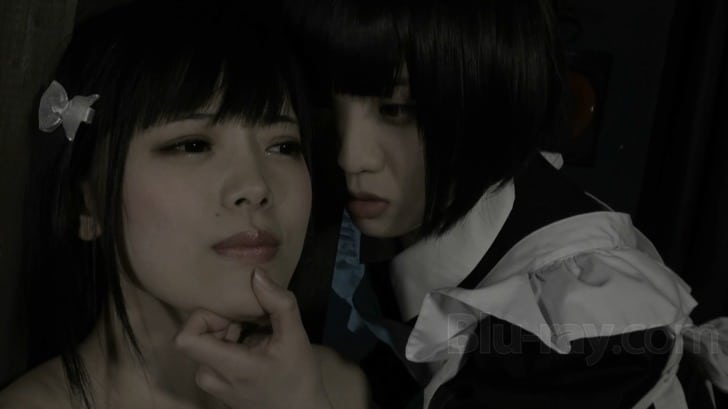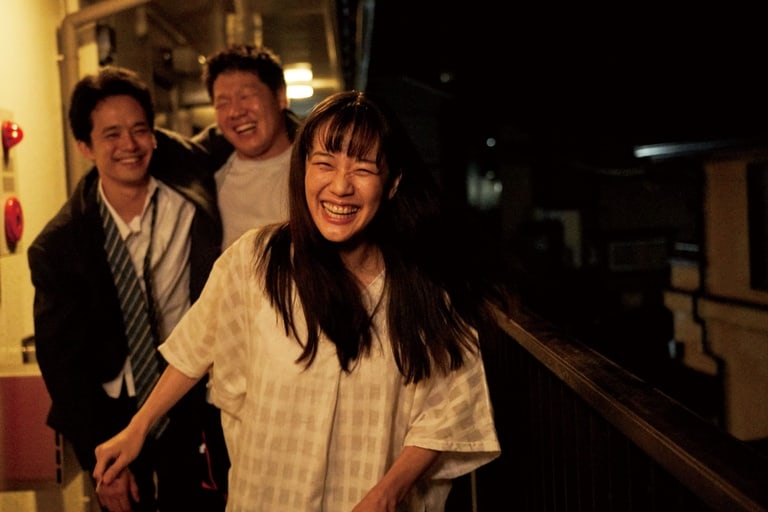After a woman is found cut in half after crossing a train bridge, the word of an Urban Legend starts circling around town. The tale tells the story of a female ghost with no legs who haunts the area of her death. The ghost is known for the sound it makes as it runs on it's fingers, a rapid tapping that sounds like “teketeke”. Looking at the ghost will cause it to attack, if the victim manages to escape the initial attack, they are tracked down and destined to die within three days.
The story, like most urban legends, finds the most popularity among school students. Kana, a young shy student and her best friend take an interest in the legend. One night Kana's friend wanders to the haunted site and is struck down by the evil spirit. Not heeding the warning, Kana goes to the site of her friend's death to pray for her, but after running into “Teketeke” and escaping the initial attack, she finds herself racing to figure out a way to appease the monster before her three days are up. She soon finds aid in a cousin who also is facing the inevitable attack from the monster. Together they look into how the monster came to exist and to figure out how they can escape their grim fate.

The greatest success within “TekeTeke” probably comes from the characterization of the urban legend. The monster itself is a rather frightening creation, accompanied by a haunting sound of nails rapidly tapping as it scurries. The sound design makes the monster identifiable as it is seldom that the viewer gets a clear look at the monster. Instead, the film uses quick flashes of the attacks.of the monster in movement, with the haunting noise being the precursor . The longest glimpses of the creature come from a silhouetted shot that shows it lifting itself up on its fingers, this shot captures such a ghastly and memorable silhouette that hides any shortcomings that may exist within the animation and prosthetics. Aware of the limited motion given with CGI at the time, the decision to keep the monster's movements quick and often conveyed in shadows, further exemplifies the thought that was put into creating a ghastly apparition
Outside of the concept and execution of the apparation, the rest of the production just becomes serviceable. The performances in the film are forgettable and the characters' struggles don't carry any emotional weight. As such, it is hard to invest in the story and every interaction between characters just acts as a holdover to get to the next appearance of the titular monster. However, given the strength of the creature design this is not necessarily a shortcoming and will be a familiar critique of those who watch a fair amount of horror films. With the script being rather bland, the film will appeal to a certain type of horror audience that is more interested in character creation than a strong narrative.

Director Koji Shiraishi has made a bit of a name for himself within the horror genre, with his films Noroi and Grotesque gaining notice among fans of horror. This success also leads to him being chosen to direct “Sadako vs Kayako”. Within his filmography TekeTeke and it's sequel remain somewhat overlooked, possibly given in part that beyond the phenomenal creature design the film remains a rather generic telling of a popular urban legend with a plot and performances that are just passable. The story doesn't really do anything to push beyond what one would expect from a production of this ilk. Still, “TekeTeke” takes a great creature concept and throws in some over the top kills that serves as a competent horror film that should please fans of Japanese Horror.















